The Myanmar Fertilizer, Seed and Pesticide Entrepreneurs Association (MFSPEA) announced that fertilizer reference prices have remained stable in the first half of 2025.
The reference prices for June 2025 stayed the same as those of the previous months. They are set at K95,000 per 50-kilogramme bag of Urea fertilizer (large granular), K124,000 per 50-kilogramme bag of Rock Phosphate and K135,000 per 50-kilogramme bag of Di Ammonium Phosphate.
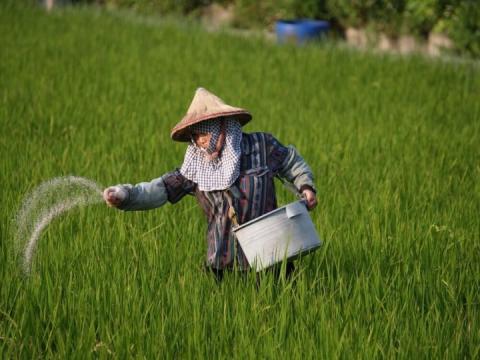
The Myanmar Fertilizer, Seed and Pesticide Entrepreneurs Association (MFSPEA) announced that fertilizer reference prices have remained stable in the first half of 2025.
The reference prices for June 2025 stayed the same as those of the previous months. They are set at K95,000 per 50-kilogramme bag of Urea fertilizer (large granular), K124,000 per 50-kilogramme bag of Rock Phosphate and K135,000 per 50-kilogramme bag of Di Ammonium Phosphate.
The prices may vary a bit depending on transport charges in other regions and states, as the aforementioned prices are set for the Yangon Region, MFSPEA stated.
Additionally, reference prices will be further announced as per rules and regulations. For overcharging, consumers can complain to the committee through contact numbers 067 410032 and 09 988539360. MFSPEA has already asked the member companies to stick to the reference prices.
At present, the Fertilizer Committee holds a quarterly meeting to ensure quality fertilizer for growers without facing shortages. Under the approval of the Fertilizer Technology Group, 12,297 fertilizer registrations have been granted after the 43rd meeting of the Fertilizer Committee. With individuals’ consent, 2,088 registrations were voluntarily cancelled. The department revoked 2,867 registrations for expiration of validity, and 7,342 registrations are still under processing. — NN/KK
Source: The Global New Light of Myanmar
The Myanmar Fertilizer, Seed and Pesticide Entrepreneurs Association (MFSPEA) announced that fertilizer reference prices have remained stable in the first half of 2025.
The reference prices for June 2025 stayed the same as those of the previous months. They are set at K95,000 per 50-kilogramme bag of Urea fertilizer (large granular), K124,000 per 50-kilogramme bag of Rock Phosphate and K135,000 per 50-kilogramme bag of Di Ammonium Phosphate.
The prices may vary a bit depending on transport charges in other regions and states, as the aforementioned prices are set for the Yangon Region, MFSPEA stated.
Additionally, reference prices will be further announced as per rules and regulations. For overcharging, consumers can complain to the committee through contact numbers 067 410032 and 09 988539360. MFSPEA has already asked the member companies to stick to the reference prices.
At present, the Fertilizer Committee holds a quarterly meeting to ensure quality fertilizer for growers without facing shortages. Under the approval of the Fertilizer Technology Group, 12,297 fertilizer registrations have been granted after the 43rd meeting of the Fertilizer Committee. With individuals’ consent, 2,088 registrations were voluntarily cancelled. The department revoked 2,867 registrations for expiration of validity, and 7,342 registrations are still under processing. — NN/KK
Source: The Global New Light of Myanmar
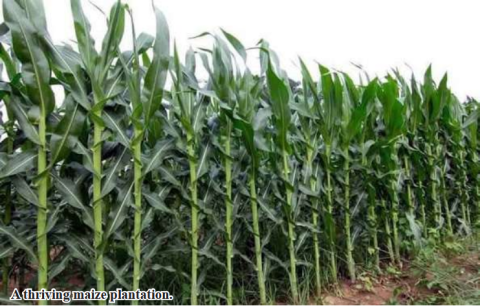
Kalay June 2
Statistics of Kalay Township Agriculture Department stated that local farmers will grow more than 23,000 acres of maize and sweet corns in coming monsoon in Kalay Township of Sagaing Region. For the 2025–2026 monsoon cropping season, it has been planned to cultivate a total of 23,282 acres of crops in Kalay Township — 17,254 acres of maize and 6,028 acres of sweet corn. Cultivation will take place from June to December this year.
Kalay June 2
Statistics of Kalay Township Agriculture Department stated that local farmers will grow more than 23,000 acres of maize and sweet corns in coming monsoon in Kalay Township of Sagaing Region. For the 2025–2026 monsoon cropping season, it has been planned to cultivate a total of 23,282 acres of crops in Kalay Township — 17,254 acres of maize and 6,028 acres of sweet corn. Cultivation will take place from June to December this year.
“Kalay Township has planned to cultivate over 23,000 acres of maize and sweet corn during this year’s monsoon cropping season. We will work to ensure that the targeted acreage is fully cultivated. In order to ensure successful crop yields, we will also provide agricultural knowledge and educate farmers on pest and disease prevention,” said Daw Marn Awe, Head of the Kalay Township Department of Agriculture.
This year, the Kalay Township Department of Agriculture will support maize and sweet corn farmers through training sessions, field demonstrations, preventive measures against stem borers, and integrated pest management systems. Farmers will also receive knowledge about the use of neembased pesticides and natural remedies like ginger and chili, as well as general agricultural best practices.
In Kalay Township, maize cultivation yields over 50 baskets per acre, with an estimated production cost of around K500,000 per acre.
For sweet corn, each acre can yield about 15,000 ears of corn, with the cost of cultivation exceeding K500,000 per acre.
Source: Yadanar Bon Newspaper
Kalay June 2
Statistics of Kalay Township Agriculture Department stated that local farmers will grow more than 23,000 acres of maize and sweet corns in coming monsoon in Kalay Township of Sagaing Region. For the 2025–2026 monsoon cropping season, it has been planned to cultivate a total of 23,282 acres of crops in Kalay Township — 17,254 acres of maize and 6,028 acres of sweet corn. Cultivation will take place from June to December this year.
“Kalay Township has planned to cultivate over 23,000 acres of maize and sweet corn during this year’s monsoon cropping season. We will work to ensure that the targeted acreage is fully cultivated. In order to ensure successful crop yields, we will also provide agricultural knowledge and educate farmers on pest and disease prevention,” said Daw Marn Awe, Head of the Kalay Township Department of Agriculture.
This year, the Kalay Township Department of Agriculture will support maize and sweet corn farmers through training sessions, field demonstrations, preventive measures against stem borers, and integrated pest management systems. Farmers will also receive knowledge about the use of neembased pesticides and natural remedies like ginger and chili, as well as general agricultural best practices.
In Kalay Township, maize cultivation yields over 50 baskets per acre, with an estimated production cost of around K500,000 per acre.
For sweet corn, each acre can yield about 15,000 ears of corn, with the cost of cultivation exceeding K500,000 per acre.
Source: Yadanar Bon Newspaper
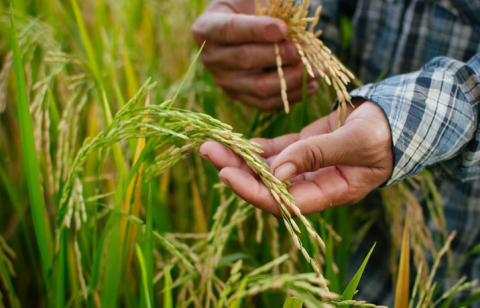
Myanmar Rice Federation (MRF) stated that Myanmar is working towards achieving Geographical Indication (GI) status for Myanma Pawsan Rice in the global market although it has already achieved popularity in the international market.
Myanma Pawsan was first exported in the 2001-2002 financial year, and Pyapon Pawsan won the third prize for World’s Best Rice at the World Rice Conference held in the Philippines in 2009 and the World’s Best Rice award in 2011 held in Vietnam. Myanma Pawsan is regarded as Myanma Pearl Rice in the global rice market.
Myanmar Rice Federation (MRF) stated that Myanmar is working towards achieving Geographical Indication (GI) status for Myanma Pawsan Rice in the global market although it has already achieved popularity in the international market.
Myanma Pawsan was first exported in the 2001-2002 financial year, and Pyapon Pawsan won the third prize for World’s Best Rice at the World Rice Conference held in the Philippines in 2009 and the World’s Best Rice award in 2011 held in Vietnam. Myanma Pawsan is regarded as Myanma Pearl Rice in the global rice market.
Moreover, efforts are being made to grab GI, the trust of the purchasing country and maintain the rice quality. Efforts will be made to integrate regionally cultivated varieties of Pawsan using technology in a way that preserves the original Pawsan’s quality and characteristics. Production will also be based on the preferences of domestic and international consumers and market demand. In addition, priority will be given to export to countries with the highest demand and market potential for Myanmar rice, such as China, the Philippines, Malaysia, and Saudi Arabia.
Ayeya Pawsan rice is mainly consumed in Ayeyawady, Yangon, Taninthayi regions and Mon and Shan states, while Shwebo Pawsan is consumed in Nay Pyi Taw Council Area, Mandalay and Sagaing regions.
The original Pawsan was cultivated in Myaungmya township of Ayeyawady Region in 1922, Pawsan Baygya rice from Kyauktan township of Yangon Region was cultivated in Shwebo township of Sagaing Region in 1997-1998, and the cultivation of Shwebo Pawsan rice variety has been expanded in the country.
The market share of Myanmar rice, including Pawsan, is 21 per cent in China, 27 per cent in Belgium, four per cent in the Philippines and five per cent in Indonesia. — ASH/KTZH
Source: The Global New Light of Myanmar
Myanmar Rice Federation (MRF) stated that Myanmar is working towards achieving Geographical Indication (GI) status for Myanma Pawsan Rice in the global market although it has already achieved popularity in the international market.
Myanma Pawsan was first exported in the 2001-2002 financial year, and Pyapon Pawsan won the third prize for World’s Best Rice at the World Rice Conference held in the Philippines in 2009 and the World’s Best Rice award in 2011 held in Vietnam. Myanma Pawsan is regarded as Myanma Pearl Rice in the global rice market.
Moreover, efforts are being made to grab GI, the trust of the purchasing country and maintain the rice quality. Efforts will be made to integrate regionally cultivated varieties of Pawsan using technology in a way that preserves the original Pawsan’s quality and characteristics. Production will also be based on the preferences of domestic and international consumers and market demand. In addition, priority will be given to export to countries with the highest demand and market potential for Myanmar rice, such as China, the Philippines, Malaysia, and Saudi Arabia.
Ayeya Pawsan rice is mainly consumed in Ayeyawady, Yangon, Taninthayi regions and Mon and Shan states, while Shwebo Pawsan is consumed in Nay Pyi Taw Council Area, Mandalay and Sagaing regions.
The original Pawsan was cultivated in Myaungmya township of Ayeyawady Region in 1922, Pawsan Baygya rice from Kyauktan township of Yangon Region was cultivated in Shwebo township of Sagaing Region in 1997-1998, and the cultivation of Shwebo Pawsan rice variety has been expanded in the country.
The market share of Myanmar rice, including Pawsan, is 21 per cent in China, 27 per cent in Belgium, four per cent in the Philippines and five per cent in Indonesia. — ASH/KTZH
Source: The Global New Light of Myanmar
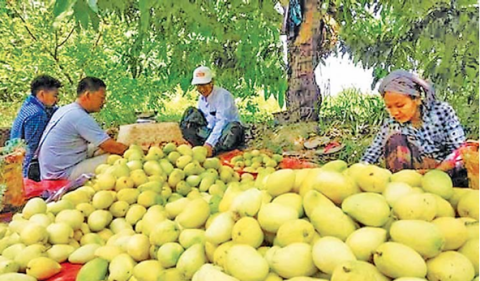
Seintalone produced by Hinthada Township of Ayeyawady Region is marketable in the domestic market due to high demand of customers, said Daw Win Maw, the owner of mango trading business in Hinthada Township.
In Hinthada Township, locally grown Seintalone mangoes have been actively traded in the market since the first week of April this year. Sales have been strong, with daily purchases reaching between 45,000 to 55,000 mangoes. It is reported that the price has risen to around Ks-65,000 per 100 mangoes.
Seintalone produced by Hinthada Township of Ayeyawady Region is marketable in the domestic market due to high demand of customers, said Daw Win Maw, the owner of mango trading business in Hinthada Township.
In Hinthada Township, locally grown Seintalone mangoes have been actively traded in the market since the first week of April this year. Sales have been strong, with daily purchases reaching between 45,000 to 55,000 mangoes. It is reported that the price has risen to around Ks-65,000 per 100 mangoes.
"Buyers from other townships are showing strong interest in mangoes from our area. Currently, up to 55,000 mangoes are being bought and sold daily. The mangoes selling well now are of high quality and very fresh. Since they are locally produced, consumers are able to enjoy fresher and cleaner produce at more affordable prices. Other regions are actively purchasing Seintalone mangoes exported from here. With this growing demand for locally grown mangoes, mango farmers are finding more opportunities and experiencing better conditions," said Daw Win Maw, a mango trade center operator from Hinthada Township.
This is the season when locally grown mangoes, including Seintalone, are be coming available in Hinthada Township. Due to the strong demand and brisk trade of these local mangoes, which are sold exclusively as regional produce, benefits include reduced transportation costs and fresher goods.
SMK
MWD Daily Newspaper
Seintalone produced by Hinthada Township of Ayeyawady Region is marketable in the domestic market due to high demand of customers, said Daw Win Maw, the owner of mango trading business in Hinthada Township.
In Hinthada Township, locally grown Seintalone mangoes have been actively traded in the market since the first week of April this year. Sales have been strong, with daily purchases reaching between 45,000 to 55,000 mangoes. It is reported that the price has risen to around Ks-65,000 per 100 mangoes.
"Buyers from other townships are showing strong interest in mangoes from our area. Currently, up to 55,000 mangoes are being bought and sold daily. The mangoes selling well now are of high quality and very fresh. Since they are locally produced, consumers are able to enjoy fresher and cleaner produce at more affordable prices. Other regions are actively purchasing Seintalone mangoes exported from here. With this growing demand for locally grown mangoes, mango farmers are finding more opportunities and experiencing better conditions," said Daw Win Maw, a mango trade center operator from Hinthada Township.
This is the season when locally grown mangoes, including Seintalone, are be coming available in Hinthada Township. Due to the strong demand and brisk trade of these local mangoes, which are sold exclusively as regional produce, benefits include reduced transportation costs and fresher goods.
SMK
MWD Daily Newspaper
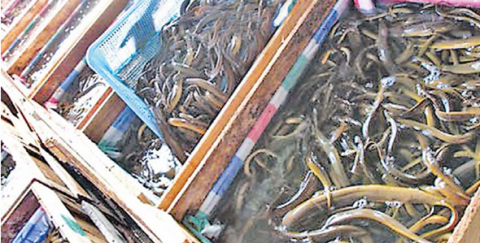
Local fishermen and businesspersons from Mawlamyinegyun Township of Ayeyawady Region sent a large volume of spiny eels to Yangon market said Daw Aye Aye Khaing, a businessperson engaging in fishery products in Mawla myinegyun Township.
Local businesspersons are engaging in systematic processing the fish and sell them to Yangon market. They sent 75,000 viss of spiny eel to Yangon market.
Local fishermen and businesspersons from Mawlamyinegyun Township of Ayeyawady Region sent a large volume of spiny eels to Yangon market said Daw Aye Aye Khaing, a businessperson engaging in fishery products in Mawla myinegyun Township.
Local businesspersons are engaging in systematic processing the fish and sell them to Yangon market. They sent 75,000 viss of spiny eel to Yangon market.
Daw Aye Aye Khaing remarked: “We sell spiny eels and fishery products to Yangon monthly. Due to high demand from Yangon market, we shipped 75,000 viss of spiny eel. Thanks to high demand from Yangon for purchase of dried fish and marine products, local businessper sons and fishermen.”
Spiny eel sold by Mawlamyinegyun Township to Yangon market fetches Ks-19,500 per viss. So, local fishermen and people in production chains can earn increased incomes for their families.
SK
MWD Daily Newspaper
Local fishermen and businesspersons from Mawlamyinegyun Township of Ayeyawady Region sent a large volume of spiny eels to Yangon market said Daw Aye Aye Khaing, a businessperson engaging in fishery products in Mawla myinegyun Township.
Local businesspersons are engaging in systematic processing the fish and sell them to Yangon market. They sent 75,000 viss of spiny eel to Yangon market.
Daw Aye Aye Khaing remarked: “We sell spiny eels and fishery products to Yangon monthly. Due to high demand from Yangon market, we shipped 75,000 viss of spiny eel. Thanks to high demand from Yangon for purchase of dried fish and marine products, local businessper sons and fishermen.”
Spiny eel sold by Mawlamyinegyun Township to Yangon market fetches Ks-19,500 per viss. So, local fishermen and people in production chains can earn increased incomes for their families.
SK
MWD Daily Newspaper
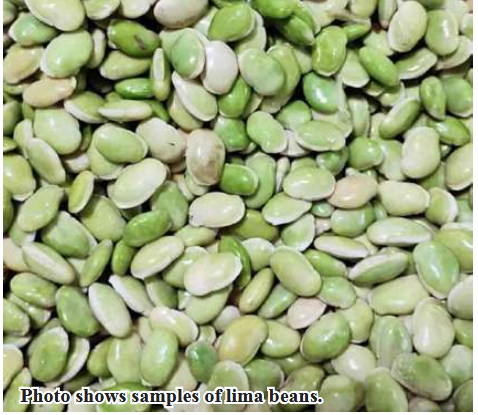
Mawlamyinegyun May 28
Trading of large lima bean is in high demand at the domestic market in Mawlamyinegyun Township of Ayeyawady Region, said Daw Thuza Win, the owner of pulse and bean trading in Mawlamyinegyun Township.
In the bean trading market of Mawlamyinegyun Township, white large flat lima beans have been selling well since the first week of May this year, with strong buying activity and good trade flow. It is reported that the increased demand for these white lima beans is mainly due to purchases coming from the Yangon market.
Mawlamyinegyun May 28
Trading of large lima bean is in high demand at the domestic market in Mawlamyinegyun Township of Ayeyawady Region, said Daw Thuza Win, the owner of pulse and bean trading in Mawlamyinegyun Township.
In the bean trading market of Mawlamyinegyun Township, white large flat lima beans have been selling well since the first week of May this year, with strong buying activity and good trade flow. It is reported that the increased demand for these white lima beans is mainly due to purchases coming from the Yangon market.
"Around here, the demand for white lima beans is higher compared to other beans. The buying started around the first week of this month. The Yangon domestic market has been purchasing white lima beans, and trading has become more active. The reason for this domestic buying is that businesses related to lima beans are starting to operate again locally. Since the trade is going well, those who have stored white lima beans are in a favorable position," said Daw Thuza Win.
Currently, in the Mawlamyinegyun Township bean trading market, white lima beans are trading at up to K165,000 per sack due to the strong demand. This rising demand is providing better job opportunities for bean storage operators, traders, freight drivers, and labourers, as the entire supply chain benefits from the increased trade activity. -Kyaw Kyaw Lin
Source: The Global New Light of Myanmar
Mawlamyinegyun May 28
Trading of large lima bean is in high demand at the domestic market in Mawlamyinegyun Township of Ayeyawady Region, said Daw Thuza Win, the owner of pulse and bean trading in Mawlamyinegyun Township.
In the bean trading market of Mawlamyinegyun Township, white large flat lima beans have been selling well since the first week of May this year, with strong buying activity and good trade flow. It is reported that the increased demand for these white lima beans is mainly due to purchases coming from the Yangon market.
"Around here, the demand for white lima beans is higher compared to other beans. The buying started around the first week of this month. The Yangon domestic market has been purchasing white lima beans, and trading has become more active. The reason for this domestic buying is that businesses related to lima beans are starting to operate again locally. Since the trade is going well, those who have stored white lima beans are in a favorable position," said Daw Thuza Win.
Currently, in the Mawlamyinegyun Township bean trading market, white lima beans are trading at up to K165,000 per sack due to the strong demand. This rising demand is providing better job opportunities for bean storage operators, traders, freight drivers, and labourers, as the entire supply chain benefits from the increased trade activity. -Kyaw Kyaw Lin
Source: The Global New Light of Myanmar
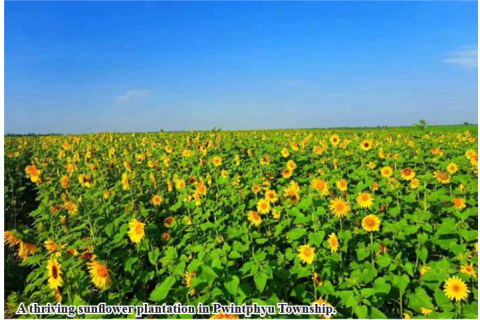
Pwintphyu May 28
A total of 1,046 acres of sunflower will be planted during this rainy season in Pwintphyu Township, located in Minbu District of the Magway Region, according to the Department of Agriculture for Pwintphyu Township.
Pwintphyu Township has planned to plant 1,046 acres of sunflower in the rainy season, and is currently working on cultivating farmland to grow sunflower.
Pwintphyu May 28
A total of 1,046 acres of sunflower will be planted during this rainy season in Pwintphyu Township, located in Minbu District of the Magway Region, according to the Department of Agriculture for Pwintphyu Township.
Pwintphyu Township has planned to plant 1,046 acres of sunflower in the rainy season, and is currently working on cultivating farmland to grow sunflower.
“Sunflower yields more oil per acre than other oilseeds such as peanuts and sesame. Sunflower is planted more in this area in the winter. We will supervise the planting of rain-fed sunflower to meet the target,” said Daw Moe Moe Wai, head of the Department of Agriculture for Pwintphyu Township.
If sunflower can be cultivated with good yield and quality, it will not only fulfil domestic oil consumption, but also export the surplus to sell. This will generate income and develop socio-economic life, so it is necessary to expand sunflower cultivation in all regions, she said. - Ye Win Naing (NyaungU)
Source: Yadanar Bon Newspaper
Pwintphyu May 28
A total of 1,046 acres of sunflower will be planted during this rainy season in Pwintphyu Township, located in Minbu District of the Magway Region, according to the Department of Agriculture for Pwintphyu Township.
Pwintphyu Township has planned to plant 1,046 acres of sunflower in the rainy season, and is currently working on cultivating farmland to grow sunflower.
“Sunflower yields more oil per acre than other oilseeds such as peanuts and sesame. Sunflower is planted more in this area in the winter. We will supervise the planting of rain-fed sunflower to meet the target,” said Daw Moe Moe Wai, head of the Department of Agriculture for Pwintphyu Township.
If sunflower can be cultivated with good yield and quality, it will not only fulfil domestic oil consumption, but also export the surplus to sell. This will generate income and develop socio-economic life, so it is necessary to expand sunflower cultivation in all regions, she said. - Ye Win Naing (NyaungU)
Source: Yadanar Bon Newspaper
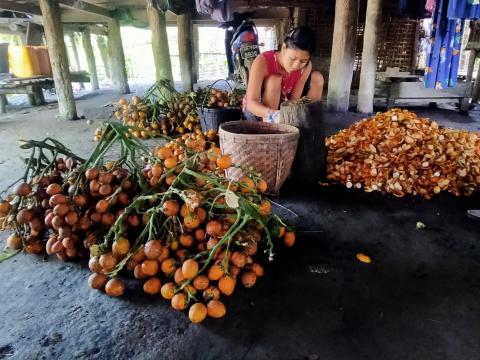
China has been increasingly purchasing Myanmar’s soft and moist areca nut, boosting sales, traders said.
There is a roaring trade of soft, moist areca nuts with water content across Ayeyawady Region. They are delivered to China after steaming the nuts.
Myanmar’s areca nut market was popular ten years ago. There was a bustling trade of soft areca nuts in 2016 in Pathein Township. The harvest starts when the nuts are sized around one inch.
Traders prefer sharp-shaped nuts rather than round ones.
China has been increasingly purchasing Myanmar’s soft and moist areca nut, boosting sales, traders said.
There is a roaring trade of soft, moist areca nuts with water content across Ayeyawady Region. They are delivered to China after steaming the nuts.
Myanmar’s areca nut market was popular ten years ago. There was a bustling trade of soft areca nuts in 2016 in Pathein Township. The harvest starts when the nuts are sized around one inch.
Traders prefer sharp-shaped nuts rather than round ones.
It is reported that they are processed to make a snack in China. Areca nuts are chewed together with slaked lime and betel leaves. Growers eye soft area nut trading on account of high prices. They are more commercially valued than dried ones. The prices have also risen significantly this year compared with those of the previous years. — NN/KK
Source: The Global New Light of Myanmar
China has been increasingly purchasing Myanmar’s soft and moist areca nut, boosting sales, traders said.
There is a roaring trade of soft, moist areca nuts with water content across Ayeyawady Region. They are delivered to China after steaming the nuts.
Myanmar’s areca nut market was popular ten years ago. There was a bustling trade of soft areca nuts in 2016 in Pathein Township. The harvest starts when the nuts are sized around one inch.
Traders prefer sharp-shaped nuts rather than round ones.
It is reported that they are processed to make a snack in China. Areca nuts are chewed together with slaked lime and betel leaves. Growers eye soft area nut trading on account of high prices. They are more commercially valued than dried ones. The prices have also risen significantly this year compared with those of the previous years. — NN/KK
Source: The Global New Light of Myanmar
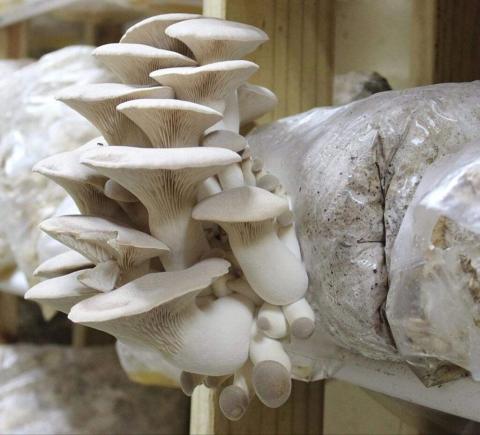
The oyster mushroom consumption has risen and as a profitable crop, it has helped growers making money.
At present, the oyster mushroom trade has elevated and the price is good too, said growers. “The trade has increased. My farm has produced oyster mushroom weighs 100-200 visses a day. The consumption has risen than before,” said a person who grows and sells oyster mushroom.
The oyster mushroom consumption has risen and as a profitable crop, it has helped growers making money.
At present, the oyster mushroom trade has elevated and the price is good too, said growers. “The trade has increased. My farm has produced oyster mushroom weighs 100-200 visses a day. The consumption has risen than before,” said a person who grows and sells oyster mushroom.
Currently, small-scale oyster mushroom farms have expanded as a result of increase in market demand. “Growing oyster mushroom doesn’t need much care and as a result of wide consumption, growers have increased. Some even transport back to other regions and states from Yangon, especially the price is better in Kachin and Shan states,” he said.
Further, growers and sellers have now expanded their farms. -Htet Oo Maung/ZS
Source: The Global New Light of Myanmar
The oyster mushroom consumption has risen and as a profitable crop, it has helped growers making money.
At present, the oyster mushroom trade has elevated and the price is good too, said growers. “The trade has increased. My farm has produced oyster mushroom weighs 100-200 visses a day. The consumption has risen than before,” said a person who grows and sells oyster mushroom.
Currently, small-scale oyster mushroom farms have expanded as a result of increase in market demand. “Growing oyster mushroom doesn’t need much care and as a result of wide consumption, growers have increased. Some even transport back to other regions and states from Yangon, especially the price is better in Kachin and Shan states,” he said.
Further, growers and sellers have now expanded their farms. -Htet Oo Maung/ZS
Source: The Global New Light of Myanmar
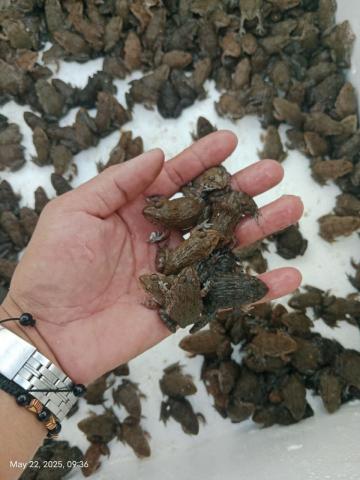
Edible frog farming has now expanded with the increased number of consumers and the demand has now risen, resulting to better price, according to frog farms.
The edible frog called Thai frog has been popular in the domestic market. “The trade has increased now, even it is not as big as the fish market, it has received wholesale orders. Big-sized frogs are even transported to other distant destinations,” said a frog farm owner.
Depending on how much they can lure more consumers,frog prices are good now.
Edible frog farming has now expanded with the increased number of consumers and the demand has now risen, resulting to better price, according to frog farms.
The edible frog called Thai frog has been popular in the domestic market. “The trade has increased now, even it is not as big as the fish market, it has received wholesale orders. Big-sized frogs are even transported to other distant destinations,” said a frog farm owner.
Depending on how much they can lure more consumers,frog prices are good now.
“From breeding to around 75 days or more than 2-3 months, frogs can be sold. Frogs are sold in viss, each one weighs 15 ticals and above. About 4-5 big-sized frogs weigh a viss. The price drops back in monsoon. But the trade is better when frogs are scarce,” he added.
Frog feeds are bran and floating fish feed. Currently, small-scale frog farms have increased in Yangon, Bago and Ayeyawady regions. — Htet Oo Maung/ZS/Ed
Source: The Global New Light of Myanmar
Edible frog farming has now expanded with the increased number of consumers and the demand has now risen, resulting to better price, according to frog farms.
The edible frog called Thai frog has been popular in the domestic market. “The trade has increased now, even it is not as big as the fish market, it has received wholesale orders. Big-sized frogs are even transported to other distant destinations,” said a frog farm owner.
Depending on how much they can lure more consumers,frog prices are good now.
“From breeding to around 75 days or more than 2-3 months, frogs can be sold. Frogs are sold in viss, each one weighs 15 ticals and above. About 4-5 big-sized frogs weigh a viss. The price drops back in monsoon. But the trade is better when frogs are scarce,” he added.
Frog feeds are bran and floating fish feed. Currently, small-scale frog farms have increased in Yangon, Bago and Ayeyawady regions. — Htet Oo Maung/ZS/Ed
Source: The Global New Light of Myanmar

